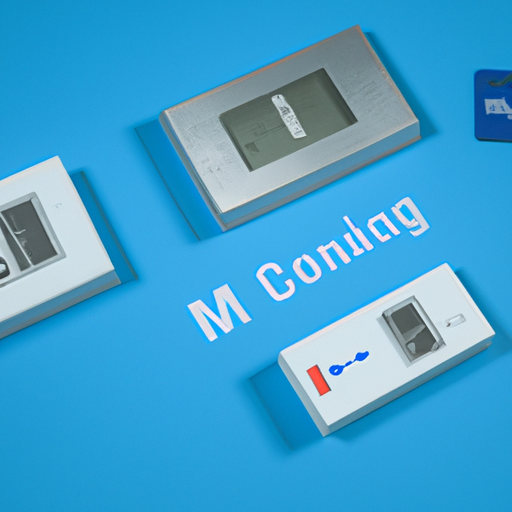

Title: Exploring Purchasing Models for the Latest Offline Conversion Switch Device Components

1. Traditional Distribution Model (200 words) The traditional distribution model is a well-established method for purchasing offline conversion switch device components. In this model, manufacturers produce the components and sell them to distributors, who then supply them to retailers or end-users. This model offers several advantages, including a wide range of component options, established supply chains, and reliable customer support. However, it can also have drawbacks, such as longer lead times, higher costs due to multiple intermediaries, and limited customization options.
2. Direct Manufacturer Purchase (200 words) Another purchasing model for offline conversion switch device components involves buying directly from the manufacturers. This model eliminates intermediaries, allowing for potentially lower costs and faster delivery times. Direct purchase also provides opportunities for customization and direct communication with the manufacturer. However, it may require larger minimum order quantities, limited warranty support, and challenges in finding reputable manufacturers.
3. Online Marketplaces (250 words) Online marketplaces have gained significant popularity in recent years, offering a convenient platform for purchasing offline conversion switch device components. These platforms connect buyers and sellers, providing a wide range of component options from various manufacturers. Online marketplaces offer advantages such as competitive pricing, user reviews, and the ability to compare multiple options. However, challenges may arise in terms of counterfeit products, limited warranty support, and potential delays in shipping.
4. Authorized Distributors (250 words) Authorized distributors are specialized entities that work closely with manufacturers to supply their components to end-users. These distributors have direct relationships with manufacturers, ensuring the authenticity and quality of the components. Purchasing from authorized distributors offers benefits such as reliable supply chains, technical support, and access to the latest product releases. However, costs may be higher compared to other purchasing models, and customization options might be limited.
5. Group Purchasing Organizations (200 words) Group purchasing organizations (GPOs) bring together multiple buyers to leverage their collective purchasing power. GPOs negotiate contracts with manufacturers or distributors, securing competitive pricing and favorable terms for their members. This model is particularly beneficial for small businesses or individuals who may not have significant purchasing volumes. GPOs also provide access to a network of industry professionals, fostering collaboration and knowledge sharing. However, GPOs may have membership fees, limited component options, and longer lead times due to the aggregation process.
Conclusion (100 words) When it comes to purchasing the latest offline conversion switch device components, businesses and individuals have several models to choose from. Each model has its own advantages and disadvantages, and the decision should be based on specific requirements, budget, and preferences. Whether opting for the traditional distribution model, direct manufacturer purchase, online marketplaces, authorized distributors, or group purchasing organizations, it is crucial to consider factors such as cost, reliability, customization options, warranty support, and delivery times. By carefully evaluating these purchasing models, stakeholders can make informed decisions and ensure the successful integration of the latest offline conversion switch device components into their electronic systems.
Title: Exploring Purchasing Models for the Latest Offline Conversion Switch Device Components

1. Traditional Distribution Model (200 words) The traditional distribution model is a well-established method for purchasing offline conversion switch device components. In this model, manufacturers produce the components and sell them to distributors, who then supply them to retailers or end-users. This model offers several advantages, including a wide range of component options, established supply chains, and reliable customer support. However, it can also have drawbacks, such as longer lead times, higher costs due to multiple intermediaries, and limited customization options.
2. Direct Manufacturer Purchase (200 words) Another purchasing model for offline conversion switch device components involves buying directly from the manufacturers. This model eliminates intermediaries, allowing for potentially lower costs and faster delivery times. Direct purchase also provides opportunities for customization and direct communication with the manufacturer. However, it may require larger minimum order quantities, limited warranty support, and challenges in finding reputable manufacturers.
3. Online Marketplaces (250 words) Online marketplaces have gained significant popularity in recent years, offering a convenient platform for purchasing offline conversion switch device components. These platforms connect buyers and sellers, providing a wide range of component options from various manufacturers. Online marketplaces offer advantages such as competitive pricing, user reviews, and the ability to compare multiple options. However, challenges may arise in terms of counterfeit products, limited warranty support, and potential delays in shipping.
4. Authorized Distributors (250 words) Authorized distributors are specialized entities that work closely with manufacturers to supply their components to end-users. These distributors have direct relationships with manufacturers, ensuring the authenticity and quality of the components. Purchasing from authorized distributors offers benefits such as reliable supply chains, technical support, and access to the latest product releases. However, costs may be higher compared to other purchasing models, and customization options might be limited.
5. Group Purchasing Organizations (200 words) Group purchasing organizations (GPOs) bring together multiple buyers to leverage their collective purchasing power. GPOs negotiate contracts with manufacturers or distributors, securing competitive pricing and favorable terms for their members. This model is particularly beneficial for small businesses or individuals who may not have significant purchasing volumes. GPOs also provide access to a network of industry professionals, fostering collaboration and knowledge sharing. However, GPOs may have membership fees, limited component options, and longer lead times due to the aggregation process.
Conclusion (100 words) When it comes to purchasing the latest offline conversion switch device components, businesses and individuals have several models to choose from. Each model has its own advantages and disadvantages, and the decision should be based on specific requirements, budget, and preferences. Whether opting for the traditional distribution model, direct manufacturer purchase, online marketplaces, authorized distributors, or group purchasing organizations, it is crucial to consider factors such as cost, reliability, customization options, warranty support, and delivery times. By carefully evaluating these purchasing models, stakeholders can make informed decisions and ensure the successful integration of the latest offline conversion switch device components into their electronic systems.